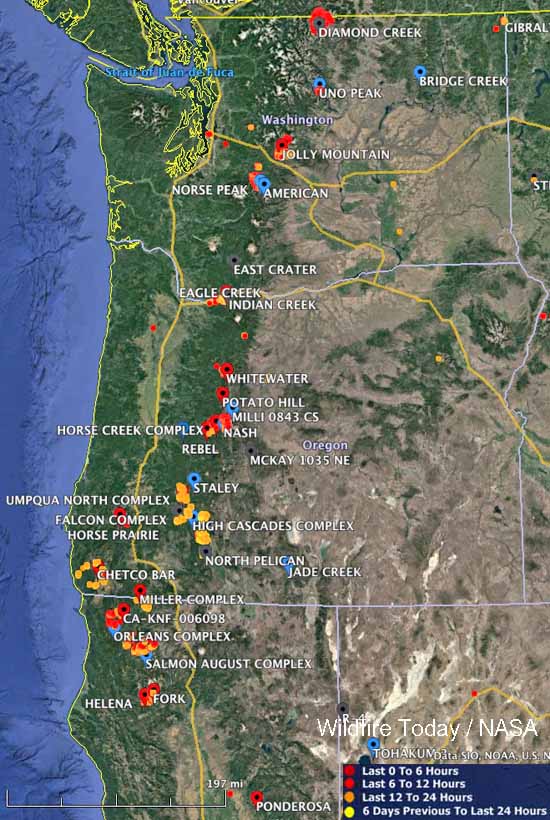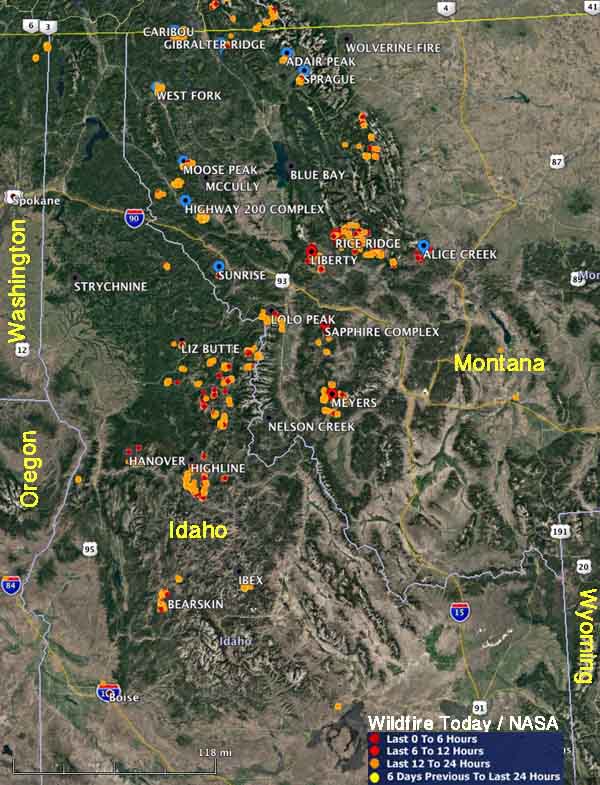Above: A trailer loaded with a D-5 dozer rolled over on the Cougar Creek Fire in Idaho August 10, 2018. Incident Management Team photo.
(Updated at 8:55 a.m. PDT September 6, 2018)
A trailer loaded with a Caterpillar D-5H dozer rolled over while it was being relocated on the Cougar Creek Fire about 26 miles west of Chelan, Washington. A Peterbilt dump truck was pulling the triple-axle transport trailer as it travelled downhill on USFS Road 5700 near Pine Flats Campground.
About halfway down the grade the driver said the brakes failed on both the truck and the trailer. As the speed increased on the curvy one-lane road the driver attempted to slow down by driving off the edge of the road in soft dirt. After negotiating several curves the trailer climbed up a bank causing it to tip over onto its side. The truck and the trailer came to a stop on the road.
The report we saw did not indicate that the truck rolled over, but it had damage to the front end, bumper, headlights, and the rear trailer hitch. On the trailer the hitch was damaged and three tires were punctured. There was some damage to the dozer but the driver was not injured.
The preliminary report suggested to prevent similar accidents drivers should use lower gears and slower speeds when driving downhill to reduce overheating the brakes.
The accident occurred at 4:10 p.m. on August 10. We have an unconfirmed report that approximately 200 contractors and agency personnel were trapped due to the blocked road and had to remain without logistical support overnight at a drop point which did not qualify as a safety zone. When the Rapid Lesson Sharing team arrived the next day at least some of the personnel refused to speak to them about the incident.
(This article was revised to clarify that the incident occurred on the Cougar Creek Fire, rather than the Cougar Fire.)









